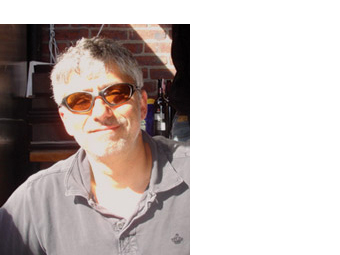Q: You’ve just released Boris Continuum Complete 8 for After Effects and Avid. What’s unique about this particular version?


Q: How did the competition, like Trapcode Particular, influence your approach to the update?
A: We’ve had particles in our packages as far back as the 1990s, and this time around we’ve completely modernized it with OpenGL rendering and After Effects integration. We also added a number of very unique features, like a particle emitter that follows an AE path. We believe we’re the only ones right now with a product that does that. Feedback has been great so far. Everyone loves the new particles filter, recognizing the huge improvement over our earlier version.
Q: What other filters inside this version are you particularly proud of?
A: A very interesting area is image restoration. These days, images come from all kinds of sources and they all have unique problems. This time around we’ve solved the very difficult problem of video flicker. There is no ideal solution to this problem, but we’ve come up with a unique approach based on the latest research. The new filter lets us automatically remove flicker from isolated areas of an image. In other words, we can deal with flicker without having to mask out an area and composite back. Lens flare also got a big facelift because it’s a very popular effect. In BCC 8, we call it Lens Flare 3D because it has a very significant 3D approach.
But bread-and-butter effects, like Glow, got overhauled, too. We now have Film Glow in this version, a very organic-looking film exposure effect.
Q: Anything in this version that almost made it into BCC 7?
A: Yes, our Videoscope tool didn’t make the cut for BCC 7. It was originally designed as part of BCC 7’s 3-Way Color Grade filter, but this time around we decided to make it a separate tool because we’ve gotten a lot of positive feedback about how useful it is from After Effects and Avid customers. Everyone needs scopes; you can’t work without them.
Q: How early and often do you get new versions into the hands of your beta testers?
A: We reach out to our key beta testers on a weekly basis to get the new improvements into their hands as soon as possible. Their feedback helps us a lot. We’re blessed to work with some of the most talented artists out there, who help us create the tools they actually need. Every filter got something suggested by them. Vectorscope, for example, was practically designed, and then redesigned again by our beta testers. When a beta tester asks us, "How do I send my particles to follow an After Effects mask?," that gives us an idea and we make it happen in the next drop. We never stop our beta program; it keeps going from release to release. If anyone out there wants to join, shoot me an email at boris@borisfx.com.
Q: What else was important for you to accomplish with this release?
A: Interoperability, definitely. BCC’s native filters travel easily from one NLE to another. As you know, there’s been a lot of movement from one NLE host to another lately, and it’s critical that all the elements in a project, including effects, move intact. That’s why we developed the BorisTransfer line of products, and these utilities take special care of the BCC filters. Let’s say you are in a project in one NLE and have applied a chroma key, and you want to move to a compositor. That chroma key travels with it; you do a setup once and you never have to do it again.
Q: Now that the AVX and AE versions are out, are there any plans for BCC for other hosts?
A: In general, the After Effects version always comes out first, and the AVX release was driven by the Avid Media Composer 6 release schedule. Apple and Sony Vegas Pro support are both coming on their heels. Sony is a new market for us; Vegas users are very excited about our built-in Motion Tracking and Extruded Text features.
Q: Your products have long taken advantage of OpenGL hardware acceleration. What’s new in BCC 8 in terms of OpenGL integration?
A: With very few exceptions, all of our filters are now based on OpenGL one way or another. The nice thing about using OpenGL is it works equally well on both Mac and PC. We don’t want to hear from our users that they are left out by their choice of graphics cards. With OpenGL we’re able to support 32-bit floating-point images without any performance penalties.
Q: What else are your engineers working on?
A: We’re working on updating Boris RED to include support for 64-bit Mac host applications, such as Adobe Premiere Pro CS5.5 and Avid Media Composer 6. A re-branded version of RED, Avid FX, is now available bundled with Avid Media Composer 6 for Mac and Windows. And the next version of BCC is already in the works. I’m dying to tell you about it, but we’ll have to wait on that.

Sections: Business
Did you enjoy this article? Sign up to receive the StudioDaily Fix eletter containing the latest stories, including news, videos, interviews, reviews and more.

When is BCC 8 Fx Plug being released for the 64bit Final Cut Pro X and Motion 5 ?
Cant wait for this release.